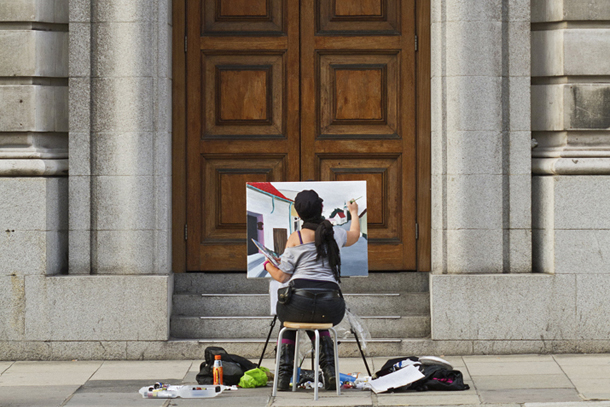
The twentieth century was bracketed by Modernism, which tried to create cultural forms to make transcendental order from chaotic modern life, and Postmodernism, which seemed to simply give in to the chaos, resulting in the calculated deconstruction of affect, sincerity, and the grand narrative. One could with very broad strokes paint Modernism and Modernity as a time of beginnings; Postmodernism and Postmodernity as a mass of endings. Of course, the nuances are far subtler, more ambiguous, and sometimes contradictory than this; for the purposes of this essay, it is enough to state that the modern and the postmodern, as represented historically, are systems of thinking, doing and making that are in almost complete conflict.
In the first decade of the twenty-first century there has been a marked shift from a Postmodern sensibility; not just back towards a Modern idealism, but encompassing aspects of both modes and moving through, between and beyond them. The art commentator Terry Smith asserts that the developing memes of the twenty-first century cannot be defined by “classic conceptions of modernity and … postmodernism” (2006: 706). Further, a new art is “emerg[ing] from … the remnants of the cultures of modernity and postmodernity, … an art of that which actually is in the world, of what it is to be in the world, and of that which is to come”(Ibid: 692). Through “adaptable modes of active resistance and hopeful persistence”, socially engaged, often politicised subcultures have emerged, in which Roland Barthes’ theories about collective authorship are embraced and exploited, recasting the artist as engineer, the art as a situation or project promoting interaction between individuals, and the audience as active participants collectively effecting social change. Smith believes this changing culture is fuelled in part by “the concentration and narrowing of [organised] media”, versus our capacity for instant global communication via the Internet; meaning that the “socio-temporal world order is changing in favour of contemporaneity for all.” (Ibid: 707)
In 2009 Hal Foster posed questions to nearly seventy leading art critics and historians regarding contemporaneity, collating the responses in October magazine. He opened the questionnaire with the affirmation that
“The category of ‘contemporary art’ is not a new one. What is new is the sense that, in its very heterogeneity, much present practice seems to float free of historical determination, conceptual definition, and critical judgment. Such paradigms as ‘the neo-avant-garde’ and ‘postmodernism,’ which once oriented some art and theory, have run into the sand” (2009: 3)
As we chart the progression of art and philosophy into the twenty-first century we can see attempts to move away from the weary cynicism and disconnectedness of late Postmodern discourse to find new language, theory and practice to better describe the post-millennial world. One of these attempts, offering an alternative to postmodern alienation through interactivity and interpersonal connection, came in the 1990s, with Relational Aesthetics.
Kateřina Šedá, the artist behind the 2011 Tate commissioned piece ‘From Morning Till Night’, uses her practice to investigate arts social function and relationship to its audience; in particular addressing the conditions in which it is produced and by whom, and for whom it is intended. Like many of her projects ‘From Morning Till Night’ was a year in the making, and is still ongoing. Šedá approached the inhabitants of the small village of Bedřichovice in her native Czech Republic to invite them to take part in her ‘game’ in London, in which they would re-enact daily routines and group activities in an area of London stretching from the Tate Modern to St Paul’s Cathedral, which corresponds to the footprint of the village. Stationed around the borders of this imaginary footprint were eighty UK-based professional and amateur artists looking at the London skyline whilst drawing a specific view of Bedřichovice in a realist style; literally imprinting one location over the other.
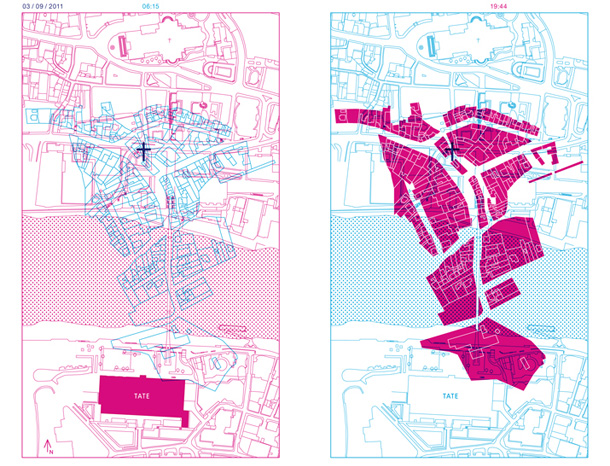
Šedá intended to connect two very different places socially and physically to expose the conventions and behaviour that both unites and divides them, whilst also fostering new links between the two nationalities. As the sun rose on the day of the performance, (September 3rd 2011) the villagers began their daily routines, and the artists began drawing; and as the sun set the villagers and artists all gathered in the Tate Modern buildings with Šedá to share their experiences of the day. At the time of writing in early 2013, Šedá reports that the villagers favourite drawings from the day were printed in a calendar, and that they are in the process of designing and building a new square in Bedřichovice that looks like London, to commemorate their experiences that day.
Claire Bishop has settled on the term Participatory Art (in her recent book Artificial Hells; Participatory Art and the Politics of Spectatorship) to describe and classify this movement. Participatory art for her is based in the involvement of many people, rather than a one-to-one interaction à la Relational Aesthetics, with people constituting the main artistic medium. The rhetoric is similar to Relational Aesthetics, but the work is less about an aesthetic outcome, and more to do with the creative rewards of participation as a politicised working process. Bishop first articulated a number of issues with participatory art projects in her controversial article Antagonism and Relational Aesthetics (October 110: 51–79). She built on this in a series of publications culminating with Artificial Hells…, in which she appraises a selection of work produced in the wake of Bourriard’s Relational Aesthetics. Whilst she has revised her original critique to accommodate some of the more ambiguously relational projects in the movement, she maintains there are so many inherent problems with participation as an art form that it should potentially be re-classed as a series of social experiments, rather than assessed using the same criteria as Fine Art.
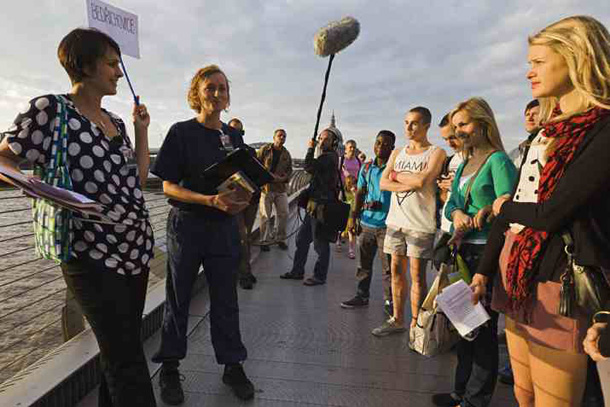
One of her main concerns is the fact that objective critical distance to projects of this type is nearly impossible to achieve due to the often-lengthy duration of the pieces. Multiple site visits are necessary to gain a full overview, and as the aim of the game is interpersonal relationships, the more involvement one has as a critic, the less objectivity one can maintain. Bishop’s principle is sound; to judge the project through established modes of critical art discourse, one must remain objective. To remain objective one cannot become involved with the project but when it is imperative to the perception of that project to engage with the people involved, one cannot judge it artistically if one is merely spectating or viewing (often amateur) second hand documentation.
Very little remains of ‘From Morning Till Night’ in the form of official physical documentation, as the original images produced by the artists involved were given to Šedá as part of the project. A small London/Bedřichovice translation dictionary was produced and given to all participants on the day, featuring colloquialisms of the village and their English equivalents, as well as basic phrases to aid communication between the two nationalities. Photographs and documentation of the preparation in Bedřichovice are available on the Tate website, and Šedá herself has questionnaires and surveys filled in by all the villagers of Bedřichovice. This is indicative of her wider practice, based more in investigation and process than measurable aesthetic outcome. The ongoing affective experience of the participants is the primary goal of her work, with the physical outcomes ideally “displayed in the living room at home”(Šedá 2006), placing her art very much in life, and specifically in the lives of those outside the art world. She has an aversion to exhibiting for precisely this reason, saying;
“My projects … react to a certain environment and it is there that they are the strongest. I keep saying that they each have a limited amount of viewers and these are the participants of the actions themselves. I very strongly feel … that the gallery causes the spontaneity to disappear: it is an artificial space. … Most of my interventions take a long time to prepare, sometimes a whole year. I spend a lot of time explaining things to people, for them to understand that participating in an action has a meaning.
And then the same thing sits in a gallery, alone, deserted, without me. I get haunted by this feeling that I have a duty to stand next to it, like a shop assistant, and that I should continue doing for the viewers what I did before the action, which is to try to explain it to people.” (Ibid)
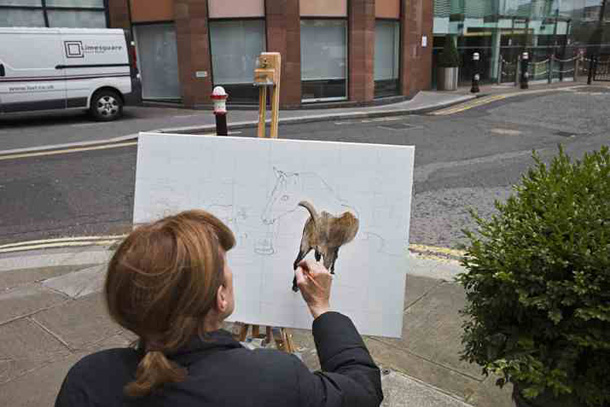
This brings us to Bishop’s second concern. Participatory art of this type has so far in the main been assessed ethically rather than artistically because of the difficulty with maintaining objectivity, and the diminished resonance of each project without a primary human contact. When coupled with the often clinical (or simply poor) documentation eventually displayed, this leads to a situation arising in which projects are quantitatively analysed for their degree of social inclusion in such a way that they begin to take on the appearance of neo-liberal social engineering rather than artistic venture.
She specifically references the UK under the New Labour government of 1997 to 2010, where community oriented art projects, particularly those of a pedagogical nature, were encouraged through funding as the welfare state was systematically dismantled. Here, “the de-hierarchising rhetoric of artists whose projects seek to facilitate creativity ends up sounding identical to government cultural policy” (Bishop 2010: 16). She also points out that artists may not be the best people to devise and effect new social and political organisations and change, reasoning that at some point, a successful project would need to be handed over to other institutions if actual social change is to be achieved – rendering a successful artistic venture one that stops being art and becomes a social venture.
Bishop worries that this quantitative measure of success creates an inverse relationship between the size of the participating and spectating audience, and the quality of the net critical contribution to the artistic judgment of the project, stating, “the purer position is not to engage in the commercial field at all, even if this means losing audiences” (2010: 37). She fears, like many in the artistic elite, that art about life becomes neither life nor art, but something implicitly less valid. Bishop’s particular concern, aside from the difficulty in critically assessing the aesthetic nature of participatory art, is that many socially engaged art projects neither fully realise their artistic aims nor their social ones. She coins the delightfully patronising monikers ‘edu-tainment’ and ‘pedagogical aesthetics’; while arguing, ironically, that this type of project is patronising and exploitative to the people who take part. Hal Foster has already touched upon this seeming problem and its innate solution in the statement that opened his questionnaire:
“…much present practice seems to float free of historical determination, conceptual definition and critical judgment” (2009: 3).
This is the crux of Bishop’s difficulty; using historical methods of critical judgment for forward-facing endeavours largely misses the point of such projects. Foster’s implied suggestion that present practice may require new language by which to define it neatly invokes Nav Haq’s theory that social, economic and artistic concerns are becoming mutually reliant on each other as a measure of value (Haq 2010). Šedá confirms that as an artist she feels her work is better assessed on a social scale as well as an aesthetic one, saying:
“I believe it is far more important to have people participate or to try and resolve the small problems of a community than to attract the interest of gallery owners and curators. I see holding an exhibition more as an added reward, not the main aim of the project.” (Garutti 2011)
Bishop concludes Artificial Hells… with the affirmation that participatory art “has the capacity to communicate … – to participants and spectators – the paradoxes that are repressed in everyday discourse, and … enlarge our capacity to imagine the world and our relations anew.” (2010: 284) She presents a convincing argument against much participatory art within the framework of traditional art criticism, whilst acknowledging its potential to be both socially engaged and artistically valid if “inter-subjective relations are not an end in themselves but serve to explore and disentangle a more complex knot of social concerns” (Ibid: 39). If some middle ground can be reached between the primary action of a piece and the eventual consumption of that action by a potentially disinterested third party, she believes participatory art can contribute effectively both to the elite Art establishment and wider audiences. She proposes a “mediating third term, an object, image, story, film” [1] (Ibid: 284) which can act simultaneously as the link and barrier between the artistic idea and an audience’s experience and interpretation of it, citing Jeremy Deller’s works, such as his 2001 re-enactment, The Battle of Orgreave, as successful examples of this.
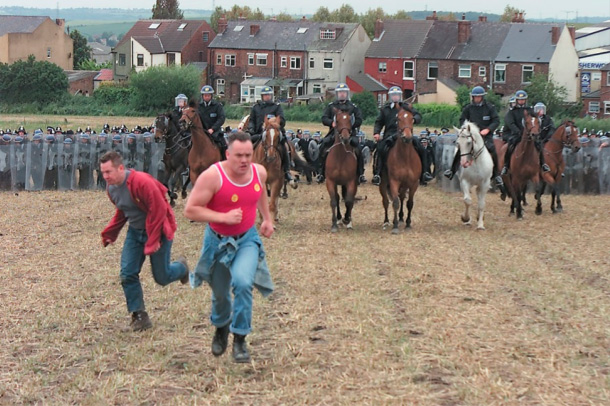
Šedá agrees that for her work to communicate effectively outside the spacio-temporal frame in which it was created, some kind of record of it has to remain, but visual evidence alone is not enough to convey the affect revealed by the project in action. She is more interested in the ripple effect of her work, the continuing story as passed on by the participants:
“I get much more excited by the thought that a myth may be created in this or that place and that my action will become a tradition that people will want to repeat.” (Šedá 2006)
However, she never intends her projects to be huge faceless operations; she makes a point of speaking to everyone involved personally. They are aimed not for the masses but her friends and family; she is interested in how their reactions influence her as much as how she influences them and their neighbours. This influence, in which the ‘myth’ is passed on from person to person, is testament to the success of her projects. A very quick Google search turns up numerous records of ‘From Morning Till Night’, most of them first hand, and all of them positive if occasionally slightly bemused about her intentions. The artists there on the day are mainly still in contact online, and the villagers, as mentioned, are continuing the project in the village of Bedřichovice. Kateřina Šedá’s work, whilst not naturally translatable to the gallery, is nevertheless reaching a huge audience, albeit mainly one with a pre-existing knowledge of the project either first or second hand.
Bishop argues a deliberately western-centric position, which unfortunately lessens the impact of her otherwise thorough argument. In discussing her research process, she reveals that she excluded some projects that – if she had followed her own inclusion criteria – should have been present, saying they “sat uncomfortably within [her] narrative, despite the fact the instigators … were trained in the West”. (2010: 288) She is talking here about Rirkrit Tiravanija and Kamin Lerdchaiprasert’s “the Land” (based in Chiang Mai) and Lu Jie’s “Long March Project” (Beijing). The narrowing of her critical lens to include only artists who work within, and conform to, traditional first-world notions, is outmoded in an age where globalisation and social media are fast rendering the concept of first-, second- and third-world cultures obsolete. The impact of social media on culture, she feels, is detrimental, negating the affect of participation because in “a world where everyone can air their views … we are faced not with mass empowerment but with an endless stream of egos leveled to banality.” It is worth noting that the world is already a different place. The speed of global change facilitated by the Internet is rendering many of Bishop’s arguments obsolete.
Julian Stallabrass points out that technological developments have been in large part signifiers of their age, saying:
“If Modernism was most strongly associated with new technologies of mass production that had a profound impact on everyday life … and postmodernism with new technologies of [distribution] that transformed domestic life … then the new era is brought into being by their synthesis.” (2003: 10)
This is echoed by the art historian Alexander Alberro in response to the questions posed by Hal Foster in October. He identifies the “unexpected and unregulated global expansion of the new communication and information technologies of the Internet” as the catalyst for a new era of art, further stating that not only has the technological revolution changed contextual practice and product, but also content.
As the Internet gained momentum in the 1990s and early 2000s as a method of communication and expression, participatory art of the type Bishop highlights was in its relative infancy. At this stage it embodied an idealistic set of concepts which Bishop rightly sees as at best naïve, at worst patronisingly philanthropic; and often unattainable due to the difficulty in conveying the true purpose and meaning of each work to a secondary audience. In 2003 Stallabrass noted
“In principle, interaction holds out great socio-cultural benefits. It should empower users, encourage cultural activity rather than mere spectating, and make art more responsive to its audience, opening art’s exclusive and (to many) intimidating spaces and discourse to the breezes of inclusiveness and democracy.” (Ibid: 61)
At that time, a significant percentage of the western world already had access to online content, with Web 2.0 becoming commonplace. Since 2010, the U.N. has declared that Internet access constitutes a basic human right, after Chinese, Iranian and Syrian access to the Google search engine was either controlled, censored or completely denied by those country’s governing bodies in an attempt to quell dissent. It could be argued that the Internet is now in fact the perfect gallery in which to showcase projects such as ‘From Morning Till Night’ because of the importance of first hand testimony and accurate, thorough documentation in successfully conveying its essence. A freely accessible online record of site- and time-specific projects not only confirms their affective relevance outside their original context; it enhances that relevance by bringing it to a wider audience.
Similar conclusions are being drawn in the world of curating. In 2010, a group of curators launched The Exhibitionist (a journal available online and in print) as a platform to discuss and assess their changing roles, methods and purpose in contemporary times. Among their concerns is the changing nature of, and possibilities for, exhibition documentation and distribution, and how it relates to the wider artistic concern for inclusivity. That same year, the organisers of the 8th Gwangju Biennale, “10 000 lives” (hosted in the South Jeolla province of South Korea) made the entire exhibition available online, reasoning that “‘Gwangju is not exactly around the corner’ and thus many interested parties had probably missed the exhibition” (MacDowell 2011). This was reported The Exhibitionist, with editor Tara McDowell (2011, n.pag.) commending the Biennale’s “impulse to share documentation of its undertaking with the world” as “right, and utterly of our time”. The online content took the form of a downloadable PDF of the exhibition guide; a dropbox of hundreds of images detailing each piece installed in the show; and YouTube videos providing a virtual tour of the whole space. McDowell concedes that a YouTube video is incomparable to the immediacy of personally experiencing a show, speculating that some of the nuances of connections between works, and the “misrecognition and myth” of memory, could be lost through such thorough archiving. However, she recognises that these new documentary methods could be a necessary and vital tool in the ongoing role of the Arts, bringing first hand experience of previously inaccessible exhibitions and artworks to far wider audiences via online social media.
Stallabrass suggested that web content can be “seen as an archaeology of the future”, drawing on the past to produce “a complex interaction of unrealised past potential and Utopian future in a synthesis that is close to the ideal of Walter Benjamin” (2003: 48). For Benjamin, mechanical reproduction removed images of the past from their temporal frame, whilst remaining strangely contemporary and relevant for viewers in the present. (Benjamin 1936) With the advent of digital technology as a method of endlessly, perfectly copying information and passing it on, the Internet seems to hold the key to allowing people to engage with art, and art institutions, on their own terms and in their own timeframe in such a way that both art and life will be enriched.
A number of interesting economic debates about originality and authorship are being reframed by the (re)distribution channels provided by social media. The ability to experience historically and geographically distant events and places as though at first hand, in fully immersive, fully interactive, three-dimensional experiences will have huge consequences for the contextual framing of art in the future. This has lead to “disarray among curators and critics” (Smith, 2006, p706) as the systems by which art could (or should) be judged change, and they try to develop new framework to discuss the resulting shifts in practical focus. Online, the quality of web content is linked to the number of hits, shares and likes it receives; value is determined by social consensus. This inverts the traditional methods of artistic assessment (where art is judged exclusively by a critical elite), creating the potential for artists to restructure existing economic value systems to suit their own ends, because of the unlimited circulation options online. The near infinite virtual spaces, their equally myriad content and the countless ways one can navigate through them mean that the challenge today is not just to grab your audiences’ attention but to keep it. This triangulation of social, economic and artistic assessment criteria is leading to a situation where the art elite will need to accept that popularity and demand do not necessarily imply a dumbing down of concept into ‘low’ art, nor an elevation of the aesthetic to merely decorative ‘bad’ art. The result, however, should not be that assessment criteria are changed so completely that hegemonic opinion leads to homogenous art practices. As Seth Godin (2012) says,
“Unanimity is impossible unless you are willing to be invisible … the ability to say, ‘It’s not for you,’ is the foundation for creating something brave and important”.
The tensions, contradictions, and balancing of differences in the style and substance of artworks and art criticism are what make art so vibrant, and its existence so important to society’s psychic well-being and ongoing development.
The difficulty appears to be the willingness of the art world to address the sticky problem of whether the public they are trying to reach (if they are trying to reach one) is interested in their work at all – whether it is accessible to anyone, to everyone, or most, or a very elite few who are familiar with the discourses surrounding art. Kateřina Šedá has suggested the barrier between people with knowledge of the arts, and those without, may be impossible to break down. However, in her 2005 graduation project ‘Converter’, she proved the importance of interaction in engaging an audience by asking members of her family to evaluate and discuss with a number of students the art they had submitted for assessment. She found that what interested and engaged them was not the work itself initially, but the artist animating it through discussion. It would seem to be that a Metamodern artistic enthusiasm, a human connection over shared concerns – mediated by an aesthetic ‘third term’ – is key to situating art in the wider world. Cyberspace is constantly being reworked by everyone who uses it; the fact that not every person will choose to engage with art is what gives truth to its promise for a more inclusive future without fear of diluting or homogenising the results.
Art based in interaction – based in life – is far from the merely part-successful social project Bishop imagines. Perhaps if she had been able to go online and experience first-hand (yet objectively mediated onscreen by distance and time) documentation of some of the projects she criticises she could have better extracted their nonvisual essence. Bishop says herself that to be successful artistically and socially, relational art projects ideally need to test their own criteria as they go along and revise them to suit both domains. The art establishment needs to continue to do the same while developing ways to critically assess such work (and its reflection on the changing nature of the art world) in relation to the new distribution channels the world now has at its disposal.
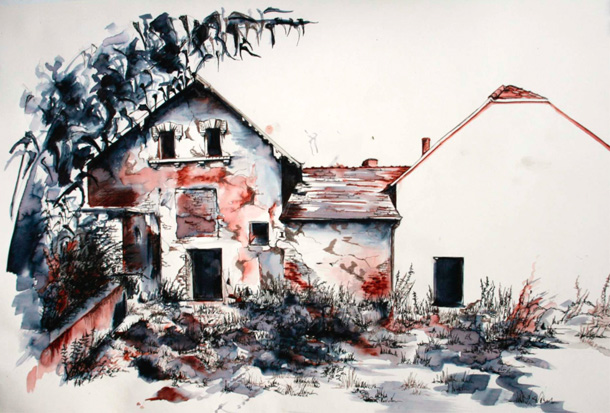
[1] Bishop takes this idea from Jacques Ranciere’s 2007 essay “The Emancipated Spectator” (p278)
Benjamin, W. (1936) The Work Of Art In The Age Of Mechanical Reproduction (trans. 2008) Penguin: London
Bishop, C. (2012) Artificial Hells; Participatory art and the politics of spectatorship Verso, New York
Foster, H., ed. (2009) “Questionnaire On The Contemporary” October 130 (Fall 2009) pp3-124 [online] Available from http://www.mitpressjournals.org/doi/pdf/10.1162/octo.2009.130.1.3 [accessed Dec 20th 2012]
Garutti, F. (2011) “Acting as a director-Katerina Seda” Domus (16-01-2011) [online] Available from http://www.domusweb.it/content/domusweb/en/interviews/2011/01/16/acting-as-a-director-katerina-seda.html [Accessed 24th Jan 2013]
Haq, N. (2010) “The Triangulation of Value” Afterall (09-02-2010) [online] Available from http://www.afterall.org/online/the.triangulation.of.value [Accessed 21st Nov 2012]
McDowell, T. (2011) “Endnote” The Exhibitionist Vol. 3 (January) [online] Available from http://www.the-exhibitionist-journal.com/issue3.htm [Accessed 4th Feb 2013]
October 110 (Fall 2004) pp. 51–79.
Šedá, K. (2006) “Nothing: An Interview with Kateřina Šedá” by Uhlířová, M., Umělec magazine (2006/1) [online] Available from http://lan.7interactive.cz:8080/divus/www/praha/en/umelci/umelec-box?id=46 [Accessed 23rd Jan 2013]
